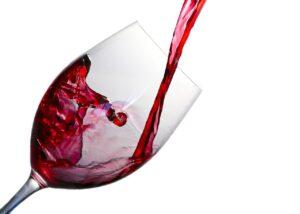This could be the reason for the dramatic decline in red wine consumption
In recent years, there has been a noticeable decline in red wine consumption worldwide – and not just because of fashion or a change in taste. Analysts certainly agree on one thing: the biggest decline has affected low-end, mass-produced red wines. And there are clearly identifiable biological, economic and technological reasons for this, writes Agrárszektor.
Not “light” enough – or just too
 The market has been preferring lighter, lower-alcohol wines for some time – at least at the communication level. This trend is spectacular in the case of white wines and rosés, but it cannot be transferred to red wines so easily. “Primeur” red wines – that is, those prepared quickly and for fresh consumption – cannot bring the experience that a consumer is looking for in a quality drink. Such wines are usually made from raw materials harvested too early, often from thin, watered-down must, especially in New World wine regions outside the EU. The end result: flat, characterless, unexciting drinks, for which interest is decreasing.
The market has been preferring lighter, lower-alcohol wines for some time – at least at the communication level. This trend is spectacular in the case of white wines and rosés, but it cannot be transferred to red wines so easily. “Primeur” red wines – that is, those prepared quickly and for fresh consumption – cannot bring the experience that a consumer is looking for in a quality drink. Such wines are usually made from raw materials harvested too early, often from thin, watered-down must, especially in New World wine regions outside the EU. The end result: flat, characterless, unexciting drinks, for which interest is decreasing.
Grapes are more expensive, the weather is unpredictable
The costs of grape growing have increased drastically in the last ten years, mainly due to the lack of skilled manual labor and energy prices. Moreover, red grapes are particularly sensitive: it takes time to achieve proper quality, and a single heavy rain before harvest can ruin the entire year’s crop. The quantitative approach, i.e. too high a yield per hectare, also deteriorates the quality of the raw material, making it increasingly difficult to produce “good things on the cheap”.
Climate change is also redrawing the face of red wines
The effects of climate change are not only noticeable, but also measurable in winemaking. Grapes are sugaring faster, so the alcohol content of wines has increased significantly – the era of “classic” red wines of 12.5–13 percent is over. Forced ripening – when grapes begin to wilt before reaching their ideal ripeness – is also an obstacle to high quality. Immature tannins, grassy flavors, and excessive acidity spoil the experience, and the winemaker has an increasingly difficult task when it comes to making a balanced, drinkable red wine.
Related news
Close to consumers
🎧 Hallgasd a cikket: Lejátszás Szünet Folytatás Leállítás Nyelv: Auto…
Read more >Wineries reloaded: the second generation is coming
🎧 Hallgasd a cikket: Lejátszás Szünet Folytatás Leállítás Nyelv: Auto…
Read more >Style, language and tools
🎧 Hallgasd a cikket: Lejátszás Szünet Folytatás Leállítás Nyelv: Auto…
Read more >Related news
Cattle farmers receive new targeted support
🎧 Hallgasd a cikket: Lejátszás Szünet Folytatás Leállítás Nyelv: Auto…
Read more >The HORECA sector joins forces with Alimentaria+Hostelco to mark the future of hospitality
🎧 Hallgasd a cikket: Lejátszás Szünet Folytatás Leállítás Nyelv: Auto…
Read more >The government is helping farmers with a loan moratorium
🎧 Hallgasd a cikket: Lejátszás Szünet Folytatás Leállítás Nyelv: Auto…
Read more >






